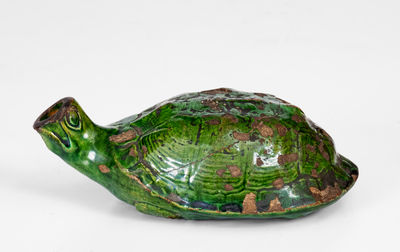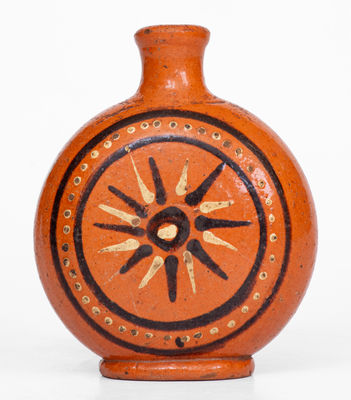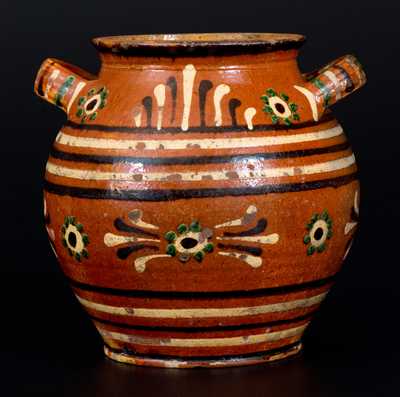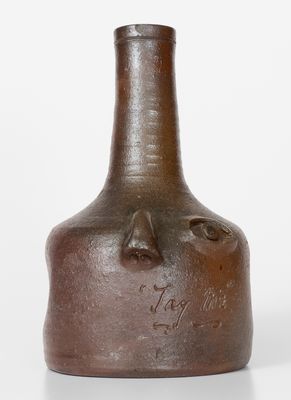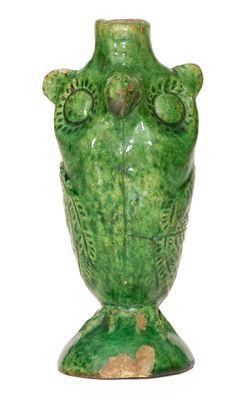Extremely Rare Moravian Copper-Glazed Redware Eagle Flask, Salem, NC origin, circa 1819-1830, round, flattened form with narrow, semi-rounded spout, decorated on the front and reverse with a relief design of a spread-winged Federal eagle with shield across its chest, clutching arrows in one foot. Detailed patterning to the bird's wing, shield, and tail. Surface covered in a bright-green lead-and-copper glaze, over white slip. Johanna Brown, in her Ceramics in America 2009 article, "Tradition and Adaptation in Moravian Press-Molded Earthenware," discusses this form: "The 1819 inventory of the Salem pottery lists eighty-four eagle bottles valued at 9s. each and thirty-four at 1s. 2d. each (fig. 40).[68] Although no corresponding mold appears in Holland's 1829 list, plaster molds for two sizes survive (fig. 41).[69] Of the three known bottles, all are the same size and all have green glaze applied on a white slip. They appear to have been inspired by mold-blown glass eagle flasks, which were immensely popular during the 1810s and 1820s. The use of an eagle on the Salem examples attests to the acculturation of the Moravians, who by 1819 had developed an appreciation for American symbols and had begun incorporating them into their decorative arts." As only three examples of this form are known to exist, this work is among the rarest Moravian figural-decorated flasks known. Its rarity is complemented by desirable subject matter and fine color. Literature: For the second documented example, see Brown, "Tradition and Adaptation in Moravian Press-Molded Earthenware," Ceramics in America 2009, fig. 40. Restored base. The eagle flask illustrated in Brown also includes such restoration. Small surface flakes to both sides. A tight stained line across one side. H 5 1/2".









